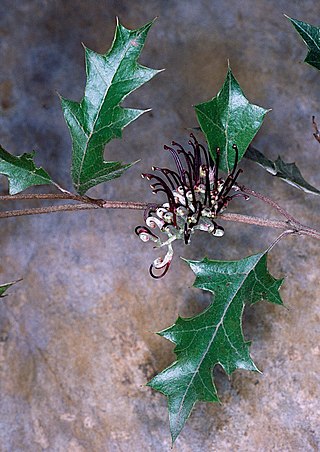- Extinct in the wild (EW): 45 species
- Critically endangered (CR): 5,702 species
- Endangered (EN): 10,901 species
- Vulnerable (VU): 9,673 species
- Near threatened (NT, LR/cd): 4,160 species
- Least concern (LC): 30,554 species
- Data deficient (DD): 5,371 species
- 66,406 extant species have been evaluated
- 61,035 of those are fully assessed [lower-alpha 1]
- 34,588 are not threatened at present [lower-alpha 2]
- 26,276 are threatened [lower-alpha 3]
- 174 are extinct or extinct in the wild:
- 129 extinct (EX) species [lower-alpha 4]
- 45 extinct in the wild (EW)
- 569 possibly extinct [CR(PE)]
- 48 possibly extinct in the wild [CR(PEW)]
- ↑ excludes data deficient evaluations.
- ↑ NT, LR/cd, LC.
- ↑ Threatened comprises CR, EN and VU.
- ↑ Chart omits extinct (EX) species

As of December 2023, the International Union for Conservation of Nature (IUCN) lists 5702 plant species categorized as Critically Endangered, including 569 which are tagged as possibly extinct and 48 possibly extinct in the wild. [1] [2] 8.6% of all evaluated plant species are listed as critically endangered. The IUCN also lists 284 subspecies and varieties as critically endangered.
Contents
- Algae
- Bryophytes
- Mosses
- Liverworts
- Pteridophytes
- Leptosporangiate ferns
- Isoetopsida
- Other pteridophyte species
- Gymnosperms
- Cycads
- Conifers
- Dicotyledons
- Piperales
- Campanulales
- Aristolochiales
- Theales
- Malvales
- Geraniales
- Lecythidales
- Polygalales
- Santalales
- Proteales
- Dipsacales
- Plumbaginales
- Rubiales
- Violales
- Euphorbiales
- Laurales
- Cucurbitales
- Ebenales
- Celastrales
- Myrtales
- Sapindales
- Asterales
- Magnoliales
- Capparales
- Apiales
- Gentianales
- Rosales
- Primulales
- Rhamnales
- Urticales
- Solanales
- Scrophulariales
- Lamiales
- Nepenthales
- Ranunculales
- Polygonales
- Podostemales
- Fabales
- Caryophyllales
- Fagales
- Other dicotyledons
- Monocotyledons
- Arecales
- Orchidales
- Pandanales
- Bromeliales
- Liliales
- Arales
- Zingiberales
- Eriocaulales
- Commelinales
- Cyperales
- Other monocotyledons
- See also
- References
Additionally 5371 plant species (8.1% of those evaluated) are listed as data deficient , meaning there is insufficient information for a full assessment of conservation status. As these species typically have small distributions and/or populations, they are intrinsically likely to be threatened, according to the IUCN. [3] While the category of data deficient indicates that no assessment of extinction risk has been made for the taxa, the IUCN notes that it may be appropriate to give them "the same degree of attention as threatened taxa, at least until their status can be assessed." [4]
This is a complete list of critically endangered plant species, subspecies and varieties evaluated by the IUCN. Species considered possibly extinct by the IUCN are marked as such.





